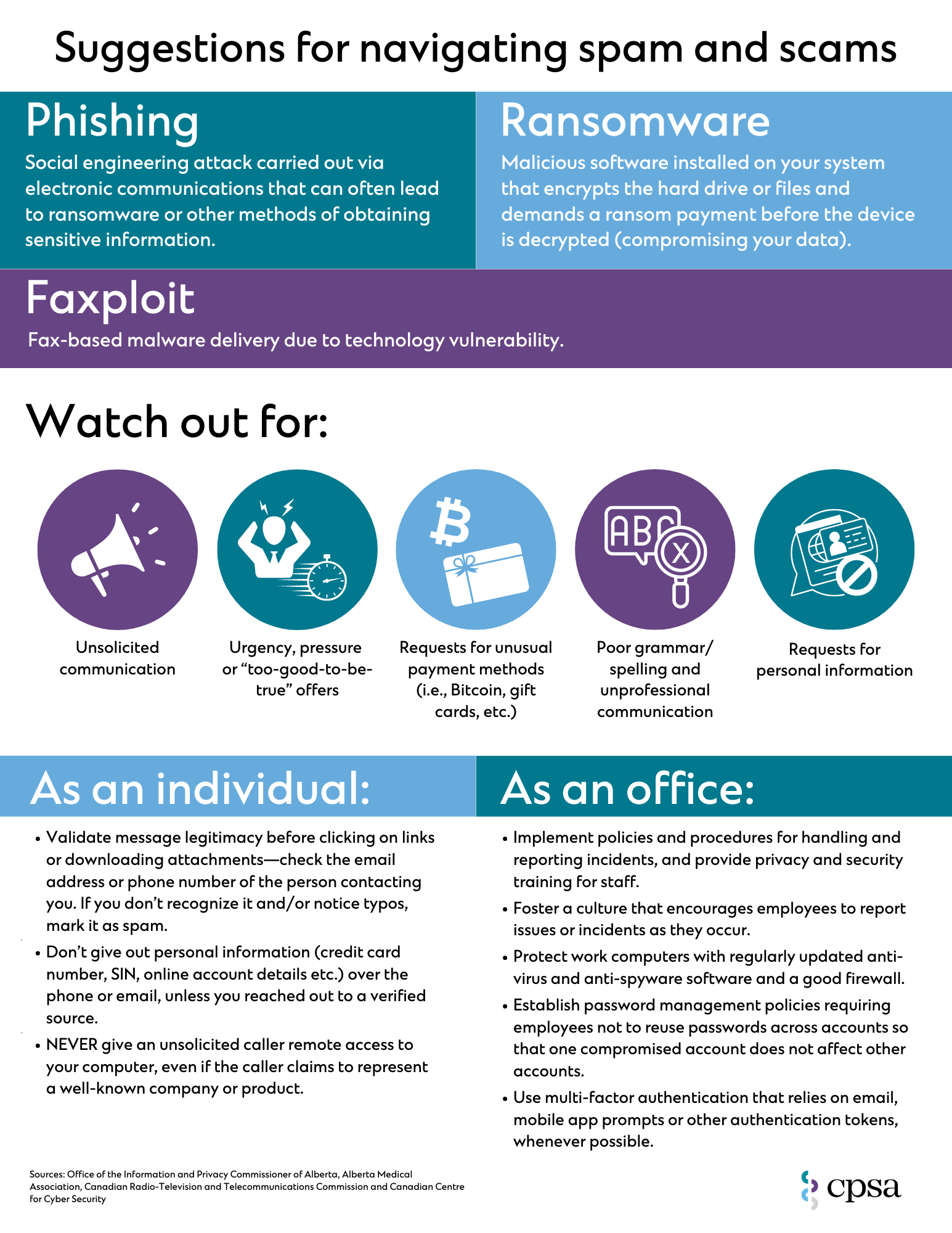Share
Spammed with scams: Tips for navigating fraudulent communications
Back to MessengerRead time: 1 minute
Nearly every week, we hear about another scam making its rounds: a loved one is in danger and you need to pay to help them; your account has been compromised and you need to re-enter your credit card information to restore it; your package is being held at the shipping centre and you need to confirm your information to collect it.
It was only a matter of time before scams started targeting clinics and healthcare facilities, too.
Spam, scams and other nefarious communications can occur through many channels, including email, phone calls, text messages, letters or even faxes. Oftentimes, scammers are searching for personal, financial or other sensitive information. Spam and scam attempts are always evolving and usually very believable, which can make them difficult to detect. For example, some clinics have recently reported receiving calls from unusual numbers posing as pharmacies or health centres and requesting patient information.
To help regulated members and healthcare facilities better navigate spam and scam attempts, CPSA has developed an infographic that defines different types of spam, outlines common characteristics of scams and highlights actions you can take to mitigate your risk.

For more information on handling spam and scam attacks, consider the following resources:
- Canadian Centre for Cyber Security
- Canadian Radio-television and Telecommunications Commission
- Alberta Medical Association
- Office of the Information and Privacy Commissioner of Alberta
If you become aware of a scam targeting your practice or medical facility, please contact CPSA at support@cpsa.ca.
Related News
All News & EventsMay 9, 2024
Spammed with scams: Tips for navigating fraudulent communications
May 9, 2024
Reminder: Diagnostic Imaging Version 4 Accreditation Standards
May 9, 2024
Join our team: Senior Medical Advisor, Continuing Competence
May 9, 2024




















Comments for this post are now closed. If you would like to share your feedback on this topic, please email support@cpsa.ca.